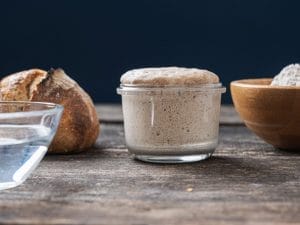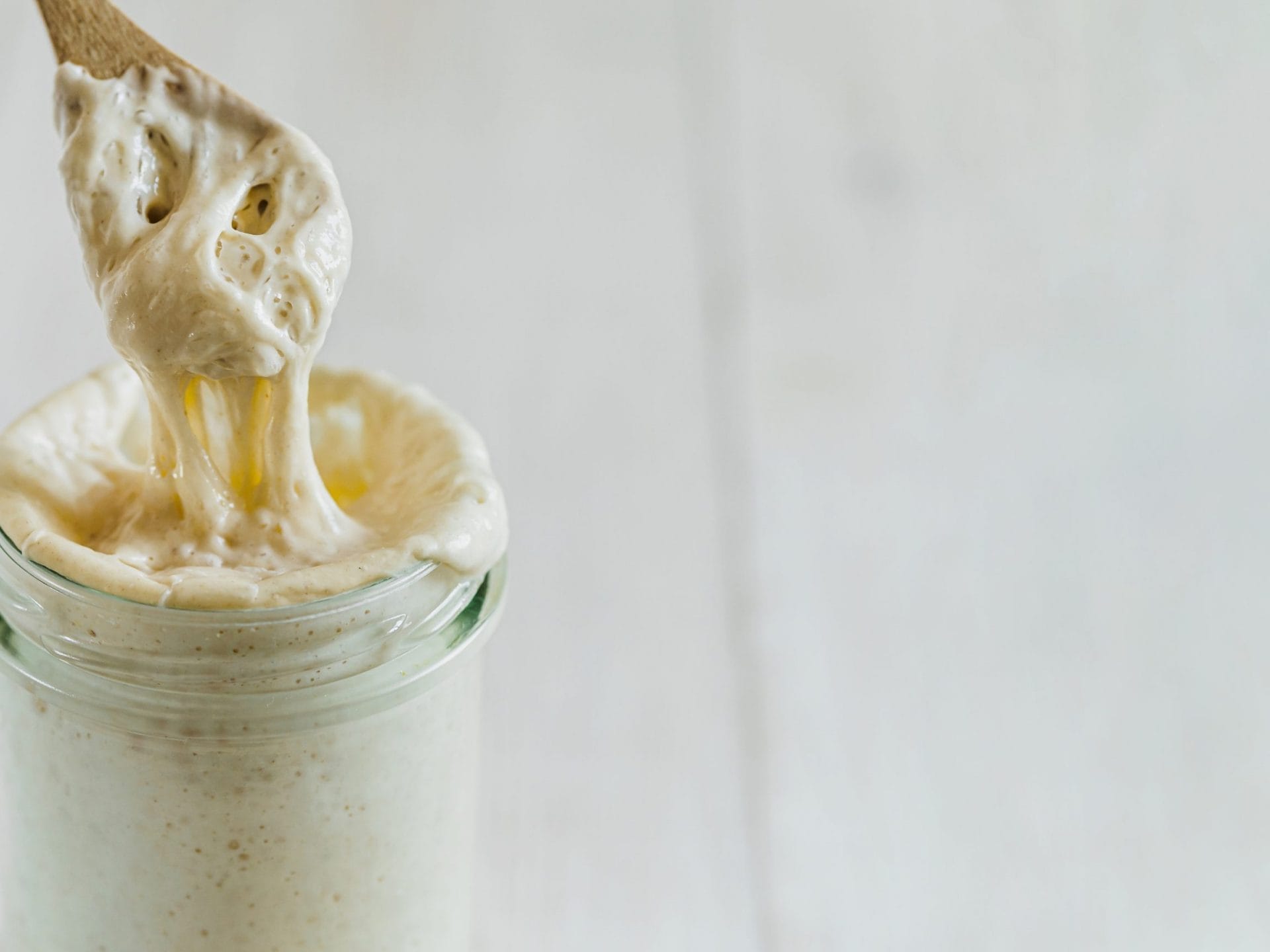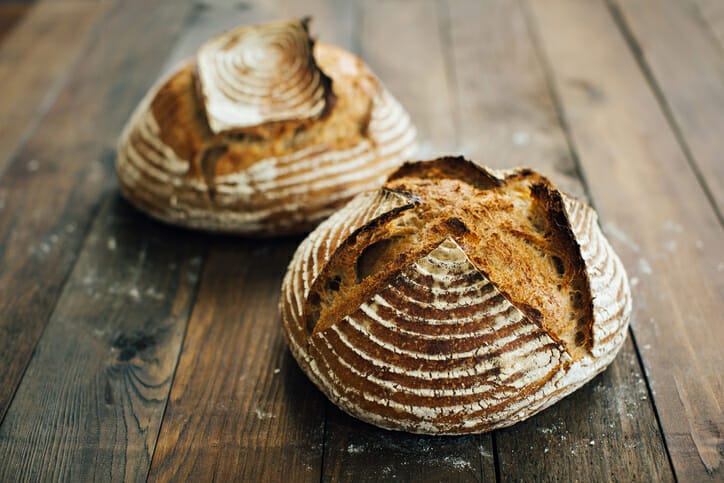Once you have a sourdough starter it’s quite easy to maintain and you can make loaf after loaf.
Read these tips for an overview of how to make and maintain a sourdough starter.
What is in a Sourdough Starter?
A sourdough starter is an equal parts mixture of flour and water that creates a live culture of lactic acid bacteria and wild yeast. Wild yeast is important because it gives the bread its rise, plus the flavours when using wild yeast are deliciously complex and create a sturdy, chewy texture in the bread.
the bread.
Once the mixture is created, allow the flour and water mixture to sit at room temperature. Within a day or two it’ll start to bubble, indicating the yeast and bacteria have started to feed on the flour and multiply.
Over the next several days, the starter will need more flour and water. This starter is then used to make sourdough bread rise as it bakes. If you are using your starter often, keep it fed 2x per day and set it on the counter at room temperature.
If using less frequently, the starter can be fed 1x per week and kept in the fridge.
Additional Tips:
- Use high quality ingredients
- If you’re new to sourdough, start with a basic recipe. With more experience, try with different flours and ingredients.
- Keep the dough at a stable, warm temperature during fermentation (70-75°F or 21-24°C).
- Score the dough just before baking. This helps control how the bread expands in the oven.




